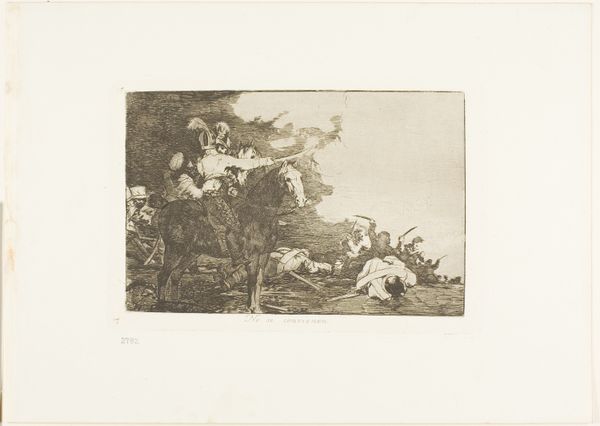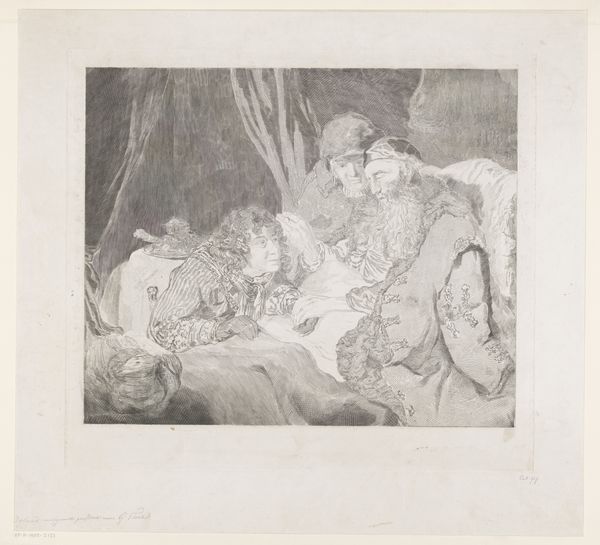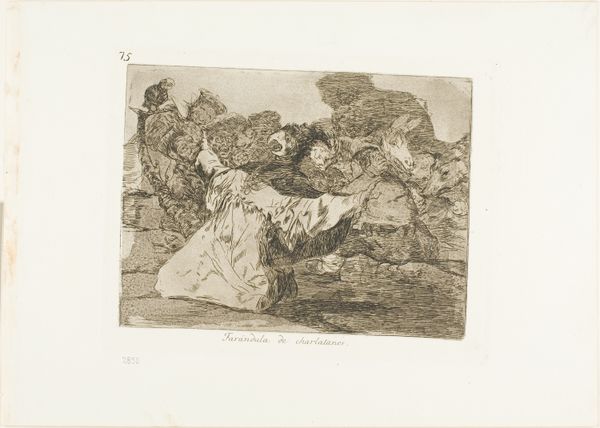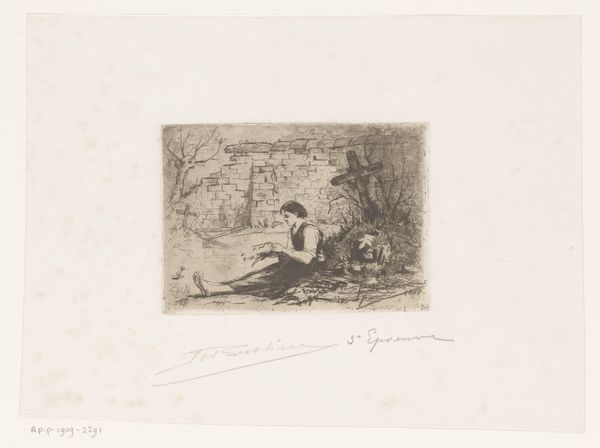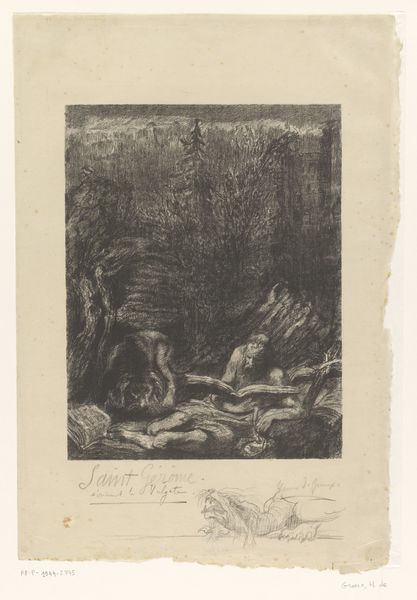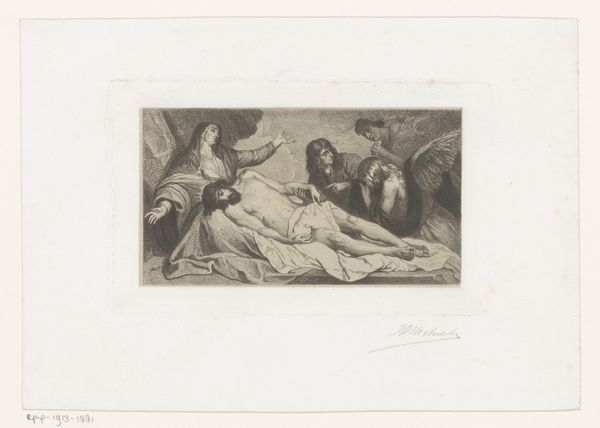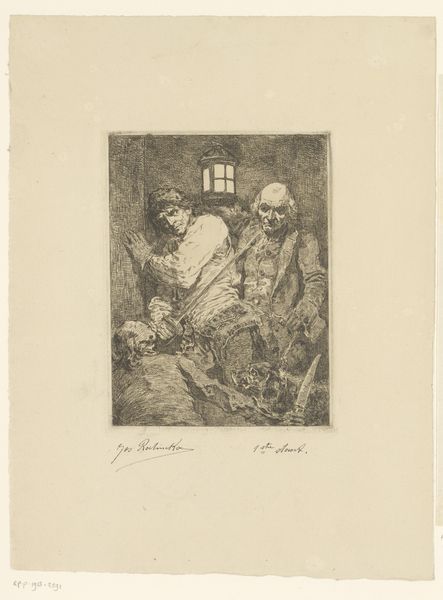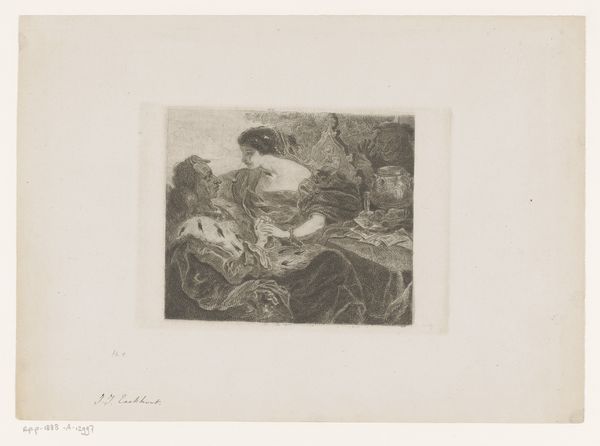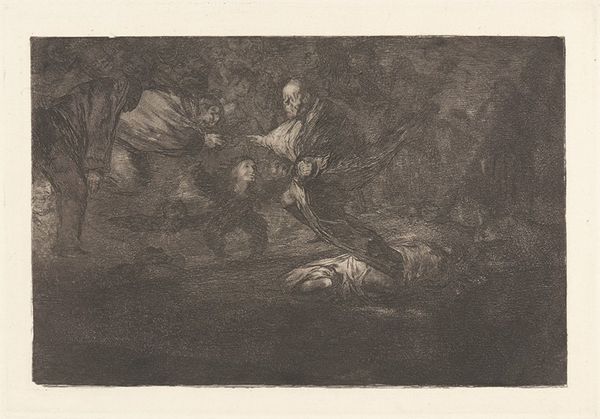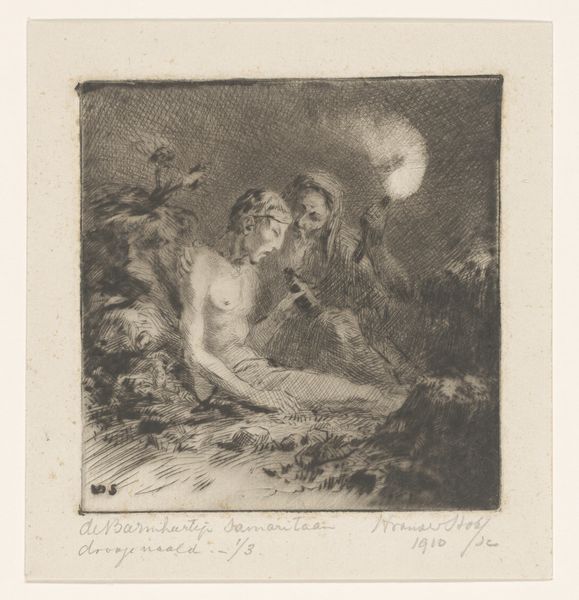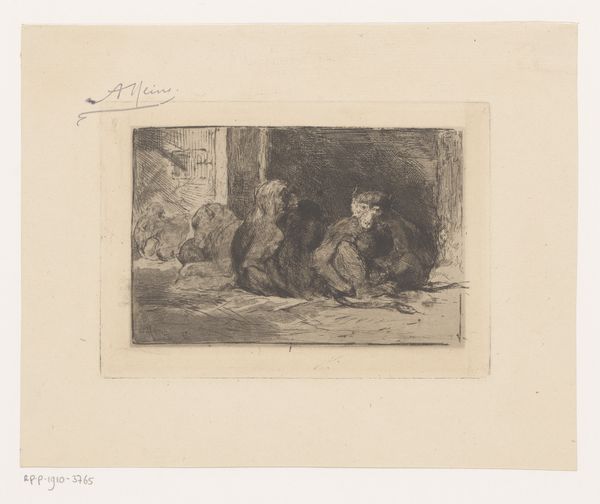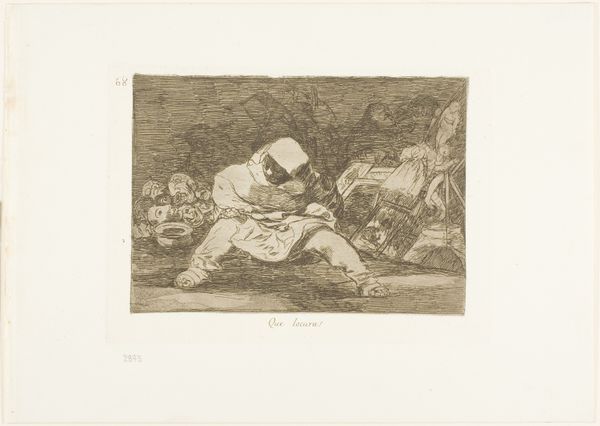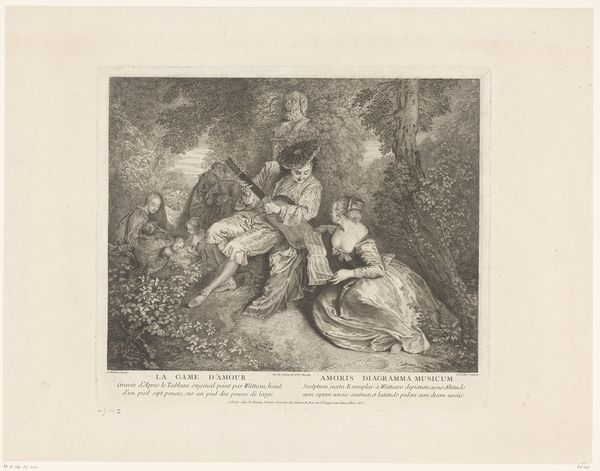
drawing, print, etching
#
drawing
#
narrative-art
# print
#
etching
#
old engraving style
#
personal sketchbook
#
romanticism
#
sketchbook drawing
#
history-painting
#
sketchbook art
Dimensions: height 150 mm, width 195 mm
Copyright: Rijks Museum: Open Domain
Curator: Goya’s etching, "Niets, het zal blijken," dating roughly between 1810 and 1863, confronts us with a scene of profound desolation, now held at the Rijksmuseum. What's your initial response? Editor: Overwhelming darkness. The central figure, clearly dead or dying, seems pinned down by the weight of that inky blackness. The spectral faces above him only intensify the sense of hopelessness. Curator: Absolutely. Goya created this print as part of "The Disasters of War" series. It offers a searing indictment of conflict and human cruelty. The prints capture scenes from the Peninsular War, fought in Spain against Napoleon's forces. The war was a brutal clash marked by violence. Editor: The prone figure—there’s something profoundly unsettling in the way he clutches what appears to be a tablet or book. Is this a commentary on the failure of enlightenment, perhaps? The death of reason? Curator: That's precisely where Goya’s genius lies. He blends historical context with potent symbolism. In Spanish, "Nada. Ello dirá," translates to "Nothing. It will tell." It suggests that in the face of war's horrors, all systems of meaning collapse. Only the stark reality of suffering remains. Editor: So those faces swirling above – do you read them as specters of judgment? Remorse? Or maybe the mocking laughter of war itself? Curator: They can be interpreted in myriad ways. I view them as representative of collective trauma— the faces of all those touched by the war’s barbarity. Goya leaves their expressions ambiguous, inviting us to contemplate the many faces of suffering. This print functions as a statement against injustice. Editor: It is a deeply affecting image, rendered even more potent by Goya's mastery of aquatint and etching. The stark contrasts, the almost palpable sense of dread… he captures the emotional landscape of war like few others. It leaves a mark. Curator: Precisely. The image serves as a mirror reflecting humanity’s capacity for both incredible cruelty and resilience. Its power transcends its historical moment. Editor: I walk away haunted, but also grateful for artists like Goya, who compel us to confront uncomfortable truths and, hopefully, learn from them.
Comments
No comments
Be the first to comment and join the conversation on the ultimate creative platform.

